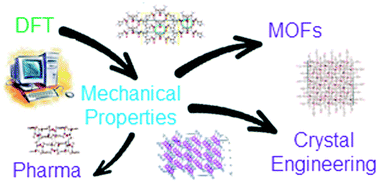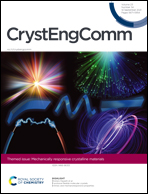Density functional theory predictions of the mechanical properties of crystalline materials
Abstract
The mechanical properties of crystalline materials are crucial knowledge for their screening, design, and exploitation. Density functional theory (DFT), remains one of the most effective computational tools for quantitatively predicting and rationalising the mechanical response of these materials. DFT predictions have been shown to quantitatively correlate to a number of experimental techniques, such as nanoindentation, high-pressure X-ray crystallography, impedance spectroscopy, and spectroscopic ellipsometry. Not only can bulk mechanical properties be derived from DFT calculations, this computational methodology allows for a full understanding of the elastic anisotropy in complex crystalline systems. Here we introduce the concepts behind DFT, and highlight a number of case studies and methodologies for predicting the elastic constants of materials that span ice, biomolecular crystals, polymer crystals, and metal–organic frameworks (MOFs). Key parameters that should be considered for theorists are discussed, including exchange–correlation functionals and dispersion corrections. The broad range of software packages and post-analysis tools are also brought to the attention of current and future DFT users. It is envisioned that the accuracy of DFT predictions of elastic constants will continue to improve with advances in high-performance computing power, as well as the incorporation of many-body interactions with quasi-harmonic approximations to overcome the negative effects of calculations carried out at absolute zero.

- This article is part of the themed collections: #RSCPoster Conference, 2021 Highlight article collection and Mechanically responsive crystalline materials


 Please wait while we load your content...
Please wait while we load your content...